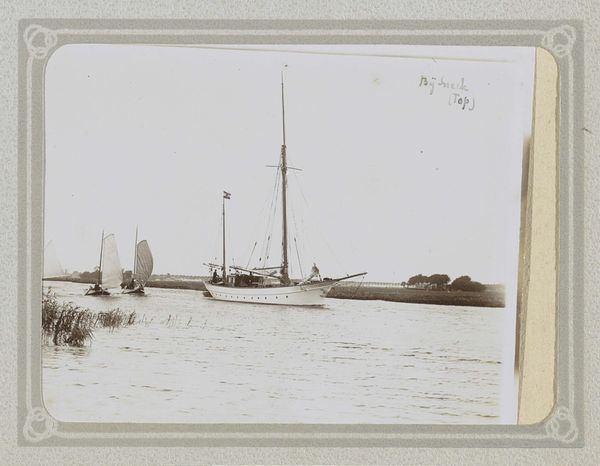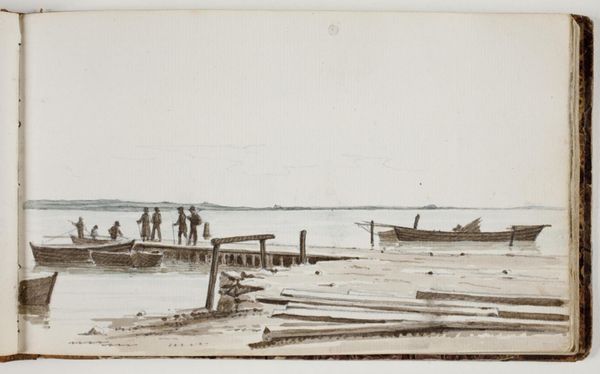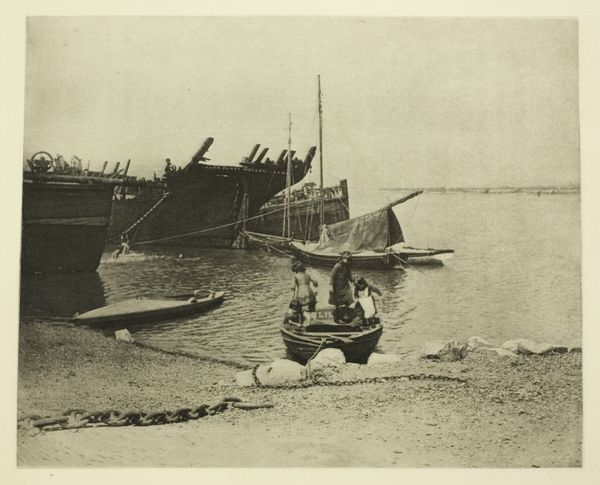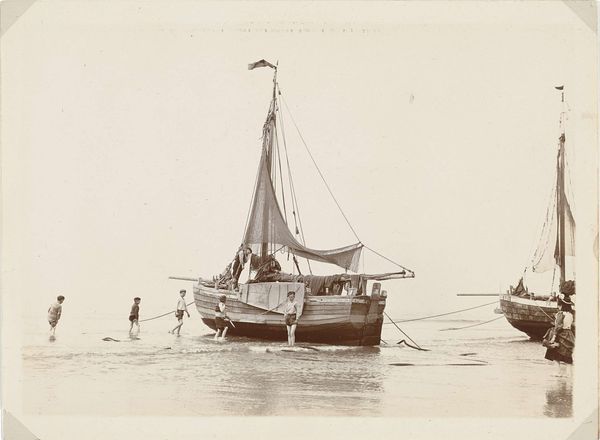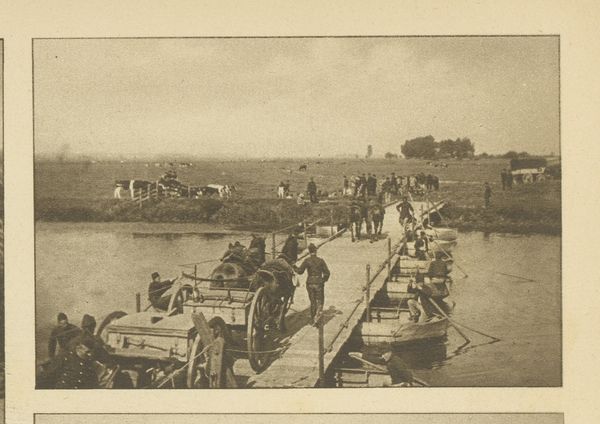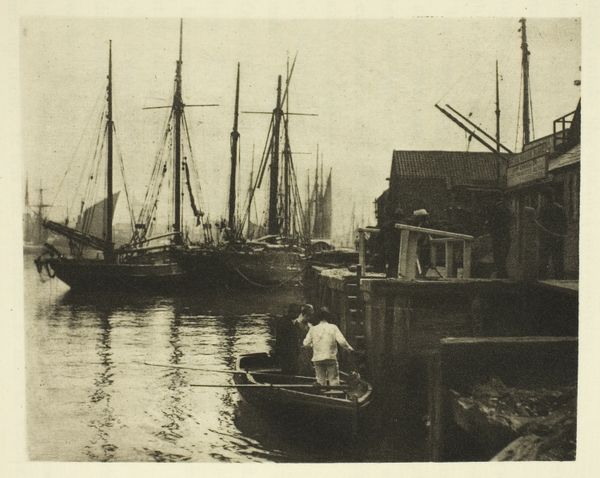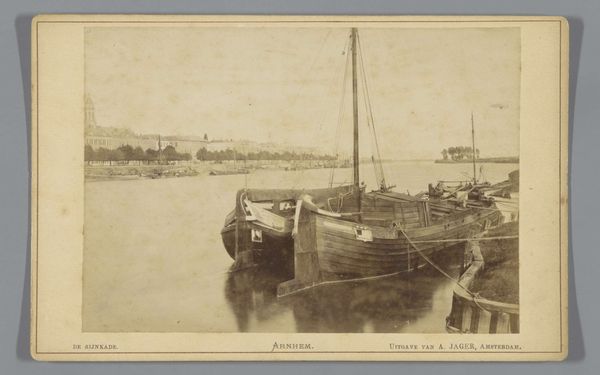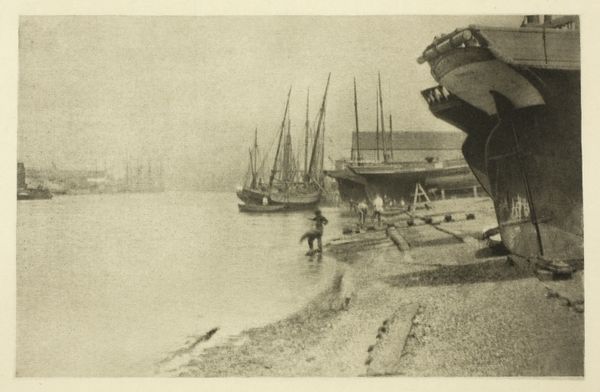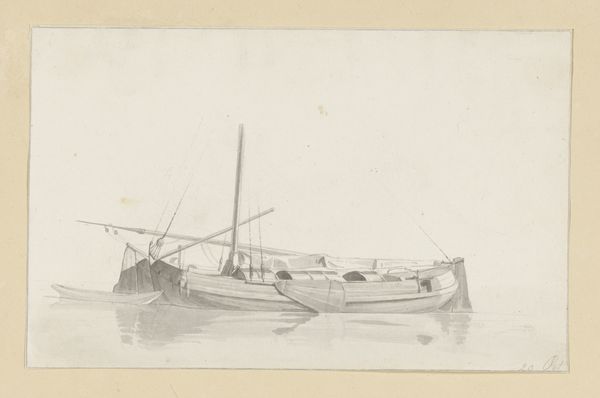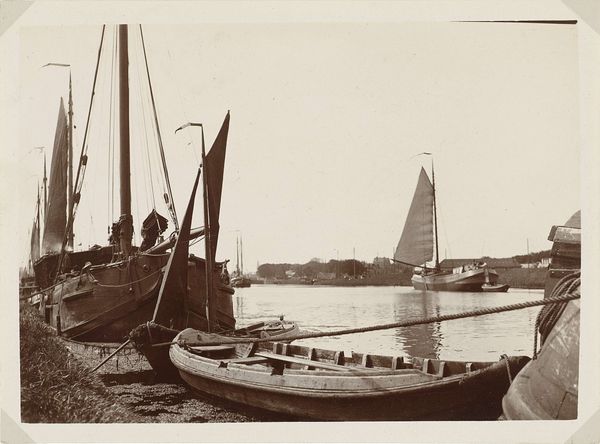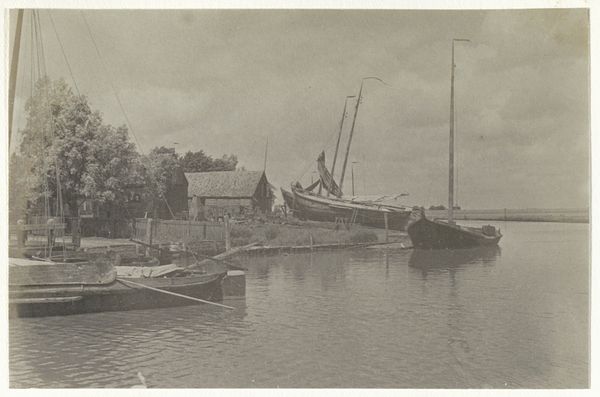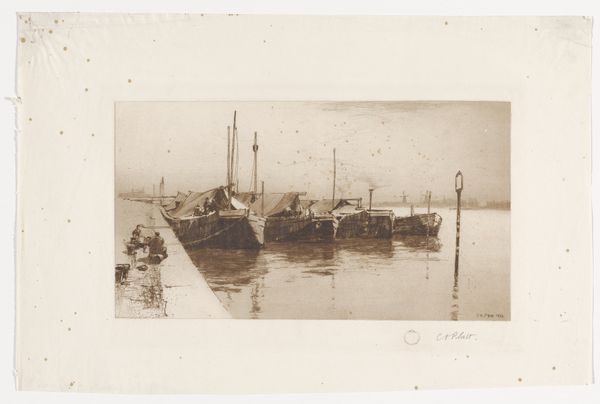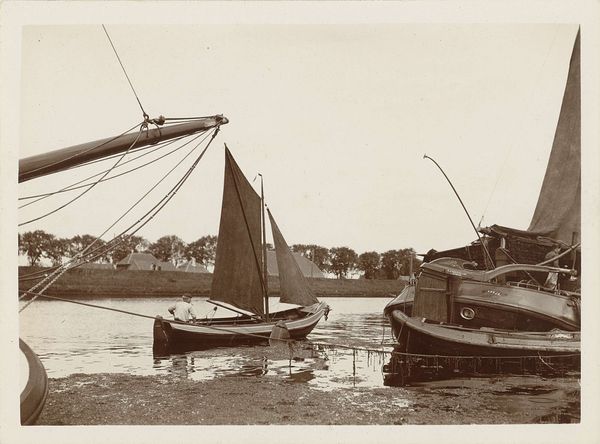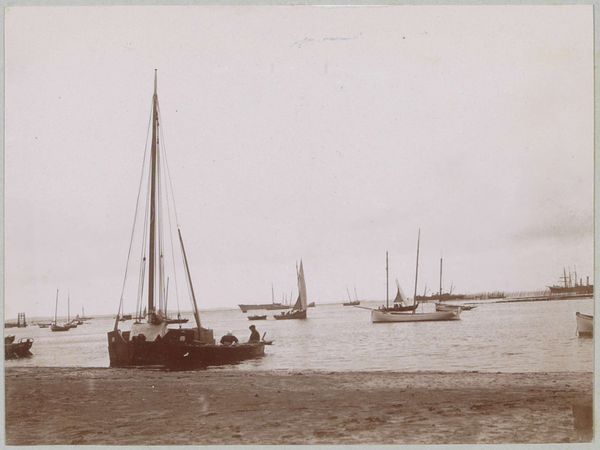
print, photography
# print
#
landscape
#
photography
#
realism
#
sea
Dimensions: height 65 mm, width 99 mm
Copyright: Rijks Museum: Open Domain
Curator: This photograph, taken before 1915, presents "Gezicht op de Zuiderzee," or "View of the Zuiderzee." Editor: It evokes a certain calmness. The tonal range is narrow, almost sepia-like, focusing attention on the textures of the boats and the water's surface. What can you tell me about it from a production standpoint? Curator: Considering the socio-political climate of pre-World War I Europe, this photograph reflects the relative peace and burgeoning tourism around the Zuiderzee. The choice of photography, already becoming more accessible, democratized landscape painting and allowed more people access to depictions of the Dutch landscape and culture. The rise of photography and photogravure meant more pictures were in circulation at the popular level, forming an appreciation of Dutch subjects. Editor: Absolutely, and the focus on the material elements highlights specific aspects. The emphasis isn't just on aesthetics. Instead, you immediately start considering the boats. I want to think about their construction and who built them. It feels that craftsmanship and material are equally important. How would people in the region relate to this imagery at that time? Curator: They would have instantly recognised their place. The boats themselves were likely sources of both sustenance and a way of life for fishing communities. This photograph offers a subtle, almost documentary, approach to recording Dutch maritime culture. Photography, at that point, becomes entangled in questions of social standing because who had their photo taken then meant a sign of some degree of status. Editor: Interesting that, on closer inspection, we can even see how light falls on those rough-hewn docks and moored ships—this image is imbued with labor, reflecting the everyday realities for inhabitants that depended on water travel and its attendant industries. The photo aesthetic makes one wonder about the relationship between man, sea, and time through process and means of making it. Curator: The photograph serves as both a snapshot and cultural signifier, connecting it back to ideas of place and social identity, which transcends the single capture. Editor: Yes, viewing this image reveals details beyond surface-level interpretation, deepening our sense of labor and materials of its making; a thoughtful combination that lets us pause for introspection.
Comments
No comments
Be the first to comment and join the conversation on the ultimate creative platform.
